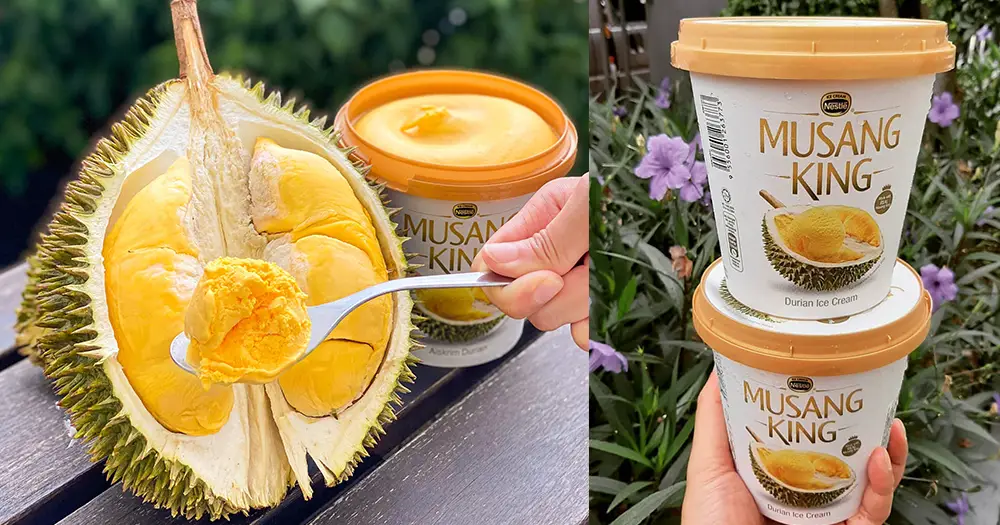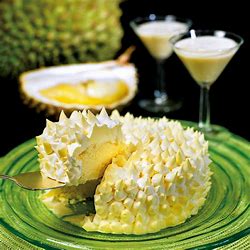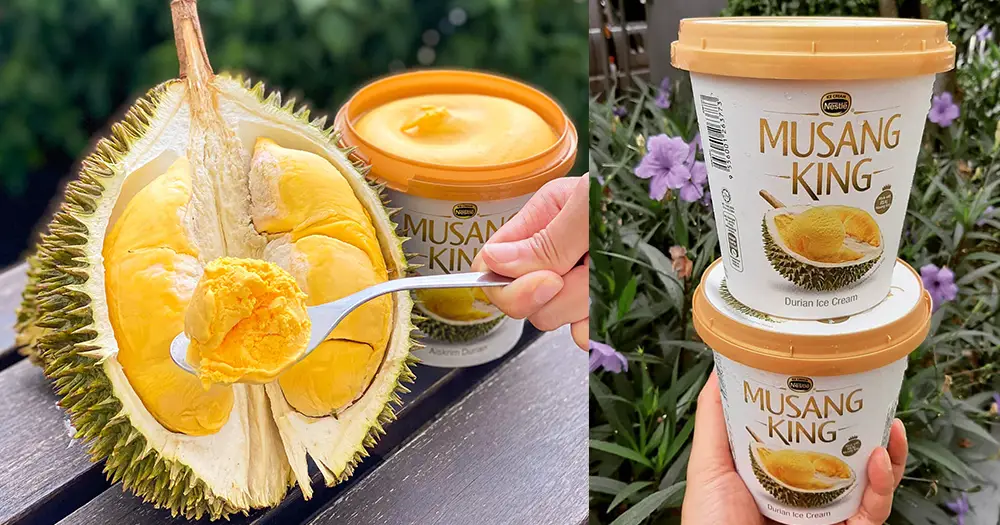This article describes the best varieties of durian fruit. Read on to find out more on the Best Dessert in the World .
Durian Fruit
Musang King Durian and J-Queen Durian

History of the Delightful Durian Fruit
Durian Fruit (Durio zibethinus) Originally grown to Southeast Asia in Philippines and in Borneo. and was commerce to Myanmar, and actively cultivated in 4 countries of Thailand, Indonesia, Philippines and Malaysia—and partly in South Vietnam, Singapore and Brunei. You are genuinely an Asian by heart if you dearly appreciate a durian that comes in all of its different flavors from 300 Delightful Durian Fruit different varieties and its flavor, which typically can weigh 1 kilo to 5 kilos.
In the 20th century, Delightful Durian Fruit–the King of Fruits, was established into the Ceylon by the Portuguese in the 16th century. It has been planted in the land of Americas Botanical Garden after.
Later, Australian author and naturalist Edmund James Banfield narrated how his advocate in Singapore sent him a durian seed which he planted and thoroughly cared for it on the North coast of Queensland, Australia.
There is a homegrown variety in the Mindanao Region of the Philippines, particularly from Davao Province (Tagum, Kalinan, Bansalan) to North Cotabato Province (Kidapawan, Makilala etc.), to Sarangani Province and some parts of South Cotabato.
The “native durian or malagkit durian” of Mindanao was well loved by everyone in the country, including me and my family since childhood days to present which we have in my parents’ small farm and even at the farms of my mothers’ clan too. It has thin flesh with small seeds yet oozing with its flavorful taste, yummy creaminess and perfectly fine texture—truly out of this world taste. It’s the reason it’s well loved by Filipinos.
My mother and clan have been remarkably loving it too as early as in the 1950s, I was not yet then born. Later on, a naturally spineless species of delightful Durian fruit—the King of fruits, was discovered in the 1960s growing wild in the province of Davao, Philippines—the home to Mount Apo, the tallest mountain in the country.
The hybrid durian has entered the Philippines after Thailand’s “Chanee Durian” which was bred with the Philippines “Native durian fruit” in Mindanao and the result was a sweet, flavorful variety of durian. ‘Twas later the three (3) Thai Arancillo, Puyat and Kob Durian Varieties that have greatly dominated the market along with the Philippines’ Native Durian. And Philippines has the one and only truly THORNLESS DURIAN fruit—A KIND YOU WON’T FIND ANYWHERE ELSE.

and Fresh Durian Smoothies
Davao Philippines celebrates its annual “Kadayawan Fruit Festival” every August featuring Durian etc, whilst Kidapawan North Cotabato held its annual “Timpupu Festival” meaning Thanksgiving for the Fruit Harvest or “Kalivungan Festival” every August—peak season runs from July to August, and even at times September.
To date the Filipinos, have amazingly inculcated Durian Fusion Filipino Cuisines from durian pastilles, durian candies, durian Yema candies, durian jam, durian sandwich spread, durian tart, durian bread, durian chocolates made in Davao, durian coffee or durian hot Choco serve in Davao International Blu’gre Cafe, durian muffins, durian ice-cream, durian smoothies, durian fresh milkshakes, durian dish and a lot more.
Inspired by my loving mother’s palatable homemade durian ice cream and durian pie—I myself have made my own homemade flavorful durian cheesecakes incorporating some imported ingredients from the US along with local ingredients as my nephews love our family’s siblings homemade blueberry cheesecakes and it’s been a hit in the family over the years.
Delightful durian fruit strikingly contains repugnant smell that some people from other countries apprehend with intolerable aroma which is because of its aldehydes and organosulfur compounds. Whilst it has a multitude of medicinal properties and health benefits but I will discuss only 7 of those most significance.
23 Different Famous Varieties of Durian Fruit in Asia:
4 Best Known Malay Durian Fruit Varieties
- XO durian– has a pale complexion or pale, highly marked by its compactness and somewhat dense flesh with an alcoholic fermentation tinge.
- Chook Kiok durian– is a yellow-colored core the usually inedible central part of the fruit itself.
- D168 durian– the flesh is medium in its thickness of concentration, somehow a bit solid and yellow-colored with a sweet flavor.
- MUSANG KING Durian or D197-named after Gua Musang in Malaysia— its place of origin. Musang meaning in Malay the cat-like Asian palm civet. (Also known as Mao Shan Wang in Chinese)Musang King Durian is the most popular breed of Durian from Malaysia. It has a wonderful bittersweet and richness flavor, and is One of The Most Expensive Fruits in the World. The price ranges from US$73 (RM300) or US$13.22 (RM55) per piece or per fruit.
4 Best Known Thai Durian Fruit Varieties
- Chanee (D123- called Gibbon) Durian– it has a very large capacity for superlative resistance to infections by the phytophthora palmivora or other bacteria or protozoans.
- Green Durian or Berserah or Tuan Mek Hijau– is marvelously the best ever durian in town.
- Mon thong (D159- Golden Pillow) Durian– is the most commercially sought after by the people because of its thickness, creaminess and thoroughly has the taste of an overload sweetness. As well as for its smaller seeds and for its slight odor.
- Rare KAN YAO Durian– The number one most expensive fruit. Each of these costs $47. 990.00 to $50,000, which is 1.5 million Thai Baht equal to a brand-new car. Its international reputation, rarest fruits, excellent taste and nutritive are the topmost reasons why this is so pricey.is being highly valued for being so sweet and relatively odorless.(making the Yubari king melon of Japan number 2 which cost $45,500 per pair).
8 Best Known Indo Durian Fruit Varieties
- Matahari or Sun Durian– from Bogor, West Java named so because the color of the flesh is golden yellow like sunlight with sharp aroma.
- Sukarno or Ajimah Durian– from Bogor, which is popular especially with the country’s President in Indonesia with bitter sweet taste.
- Bawor Durian– comes from Banyuwangi, East Java a bit similar to that of Montong Durian with sweet and thick fruit.
- Lay Durian– from Central Kalimantan with sweet and strong taste, was also bred in Queensland, Australia.
- Montong Durian– originally from Borneo which can weigh up to 13 kilograms because its meat is quite large and smells good too.
- Salopa Durian- from Tasikmalaya has thick fruit flesh and is very sweet but smaller than Montong.
- Petruk Durian-Originally from Jepara, Central Java . Most popular with durian cultivators as the flesh is not soft and thick.
- J-Queen Durian- selling price for this variety is 14 million rupiah or around US $ 1,000 apiece. The Tasikmalaya is a 32 years old Psychology student bred from Indonesian Islamic University in Yogyakarta it only from a high quality of durian hybrid. And that his durian is so sought after and pricey because the tree only produces 20 fruits annually.
According to Philippine News Agency, Davao produced premium Puyat durian will soon be in the China Market in 2023, which will all be supplied from Davao’s 62 Durian Farms, which also supplies other countries. That entails better employment for the locals of Davao—the country’s top producing Durian in the Philippines. DA Director Monteagudo said Philippines is to generate US $150 M in 1 year from Durian Export Industry. That’s great indeed!
7 Best Known Filipino Durian Fruit Varieties
- Chanee Durian or D123– one of the most infection resistant species of durian. And much pale in color.
- Mon thong Durian– is golden yellowish brown and the inside fruit is a creamy yellow color. Its sweater taste stands out and I love this variety.
- Arancillo Durian-mildly aromatic with a sweet and spicy taste. I also like this variety.
- Puyat Durian-its mildly aromatic flesh can be wholly firm, soft and buttery.
- Thornless Durian– an ultimate rare produce found only in the Philippines and not anywhere else. It was discovered in Compostela Valley in the 1950s by Mr. Dominador Pascual the Davao Experiment Station Head. Later, several trees were planted in Toril and Calinan.
- Red Prawn Durian– typically is a red- flesh durian with smooth and creamy flesh, with teeny weeny seeds.
- Native Durian or “Malagkit” Durian– the green or brown spikey hard-shell look exactly the same among the other family of durian fruits, with the flesh being notably very pale or light as it’s differentiating visual features. Definitely one of the best ever friendly durian flavor you can have for the senior citizen, and I highly recommend this for the young and adult alike, also for those who have heart ailments as well as it is characterized by a very bland, mild taste, mild aroma yet very fine, sweet and creamy. Relatively small in portion among the durian fruit variety but definitely taste better, creamier and taste sweeter among all the rest of the durian fruits family—truly out of this world. I love this PH native durian despite that it has small flesh simply because, notably, it tastes amazingly sweet “suave”. Worth every dime you’ve paid for this native durian fruit. Best served fresh or chilled. It has no bittersweet alcoholic taste on it compared to the hybrid durian. Some hybrid durians taste like it has a bit of an extremely strong red wine on it with a mixture of towering creaminess—but not so for this suave taste of native durian. Most people sweat a bit right after eating a lot of hybrid durian—but never do so when you eat a native durian or “malagkit” durian variety of the Philippines as it’s quite milder. I simply love eating this fresh and chilled, or into a homemade gelato or my homemade ice cream cake, etc. This native durian or the so called “malagkit durian fruit” is genuinely well loved by every local in Mindanao and even by the International tourists and Filipinos inculcated durian fruit in other Durian Fusion Filipino Cuisines. We would love eating this on our bare hands, although some prefer gloves when eating this. Few, though, use a fork when having durian fruit. Tourist are enjoined to come and visit the country specially 1) Davao on August Kadayawan Festival, an annual Thanksgiving for the Harvest—a month long celebration as it is the peak season for Durian Fruits along with many other Filipino fruits where durian would cost whacking less pricey and you can have native durian fruit or “malagkit durian” in a plentiful, and 2)Kidapawan Nort Cotabato on August “Timpupu Festival”, also an annual Thanksgiving Fruit Festival. One highlight of the Kadayawan Fest is the Indak-Indak sa Kadalanan, meaning street dancing as one in 1970 by mayor Elias B. Lopez. It was then called the “Apo Duwaling Festival” referring to the three significant natural wonders of Davao in Mindanao—the tallest mountain in the country, the Mt. Apo, Durian Fruit King of fruits and Waling-Waling orchids. And officially named “Kadayawan Fruit Festival” (Mandaya word meaning treasured and valuable giving thanks for the bounty fruit and crops harvest) by then the Mayor Rodrigo Roa Duterte, the former beloved President of the republic of the Philippines—referring to a prime celebration of life and gratefulness above all to God showcasing the fun street dancing competitions with fruits and floral parade showcasing the different communities, culture, food and historical tradition in Mindanao region celebrating in vibrant colorful costumes.
Important Reminders
- Eat in moderation, most specially for the ones who have heart diseases, high blood pressure and stroke. You can invariably try the Philippines native durian, which is considerably of a bland version and tastes delicately smooth, creamy just the same.
- Refrain from consuming this fruit on a destitute, empty stomach. Best to be eaten every or right after meals as a fresh fruit dessert or frozen as it oozes with perfect creaminess texture like a gelato.
- Best time to purchase is on its Philippines prime fruit peak season from July to August and often extends till September as it is prominently less pricey then. At times, it is likewise in abundance from December to January.
- Always pack light and comfy clothing. Travel light is a must.
- You can book a flight from Manila International Airport to Davao International Airport; or from Cebu Mactan International Airport to Davao International Airport. Always bring a water bottle, sunblock and rubbing alcohol. Wear a mask too.
- You can also book your group tour in advance with your regular travel agency to have their perks and promos.
- A must see in Mindanao—Pearl Farm in Samal Island Davao PhP from PhP24k to PhP46k, Eden Nature Park in Toril Davao PhP 2000, to PhP 13,000 (USD 35- USD285), and Dahilayan Adventure Park Bukidnon PhP 3,500 to Php6,000 (USD 192,000 – USD 330,000)- The Little Baguio of Mindanao the entrance fee to the park is PhP 200 per adult and PhP 50 per child with all rides package to hanging bridge, mini golf and bumper boat PhP750., Lake Apo in Valencia Bukidnon PhP 50 entrance fee to enjoy its water sports e.g. kayak, jet skis, floating bamboo raft. And stay overnight in Ultra Winds Mountain Resort & restaurant and infinity pool with PhP 100 entrance fee. The Hobbit Houses at Malaybalay Bukidnon stay overnight in a treehouse for only PhP750. Or the Sitio Maupot Resort – A Bali Inspired resort in Kidapawan-Magpet boundary overlooking a panoramic Mt Apo view ranges from PhP4,679 to PhP8,309.
Internal Links to Other Interesting Articles
- Amazing Health Benefits of Soymilk and Soybean Pudding
- Nail Health: 3 Disorders, Meanings and Remedies.
- How to Incredibly Live Longer-Part 1.
- How to Open a Hard Husk of Durian Fruit.
External Links to Health Articles
1. What 5 Top Sources of Nutrients Does our Body Need? (February 2022). simplyeducate.me
2. Why Do People Age Quickly? 8 ways on How to Stay Young, Live Longer and Healthy the Natural Way. (February 2022). simplyeducate.me
3. Coconut Benefits: 38 Medical and Non-medical Uses. (May 2022). simply educate.me
4. 17 Amazing Health Benefits of Guava. (June 2022). simplyeducate.me
5. How to Prevent Stroke: 253 Healthy Foods to Eat. (July 2022). simplyeducate.me
References
Baqi, A., Lim, V. C., Yazid, H., Anwarali Khan, F. A., Lian, C. J., Nelson, B. R., … & Kumaran, J. V. (2022). A review of durian plant-bat pollinator interactions. Journal of Plant Interactions, 17(1), 105-126.
Colina, A. L., IV. (2019, December 04). Durian from Mindanao penetrates US market. Retrieved March 25, 2023, from https://www.mindanews.com/top-stories/2019/12/durian-from-mindanao-penetrates-us-market/
Preciados, L. S., Bulayog, M. S. B., Soguilon, C., & Montiel, C. (2013). Gross margin impact analysis on adoption of Phytophthora control strategies for durian in Region XI, southern Philippines. Smallholder HOPES—horticulture, people and soil, 242.
Palicte, C. (2023, January 24). Davao Durian Farms to supply China with Puyat variety. Retrieved March 25, 2023, from https://www.pna.gov.ph/articles/1193446
Pascua, O. C., & Cantila, M. S. (1992). Maturity indices of durian (Durio zibethinus Murray). Philippine Journal of Crop Science, 17(3), 119-124.



